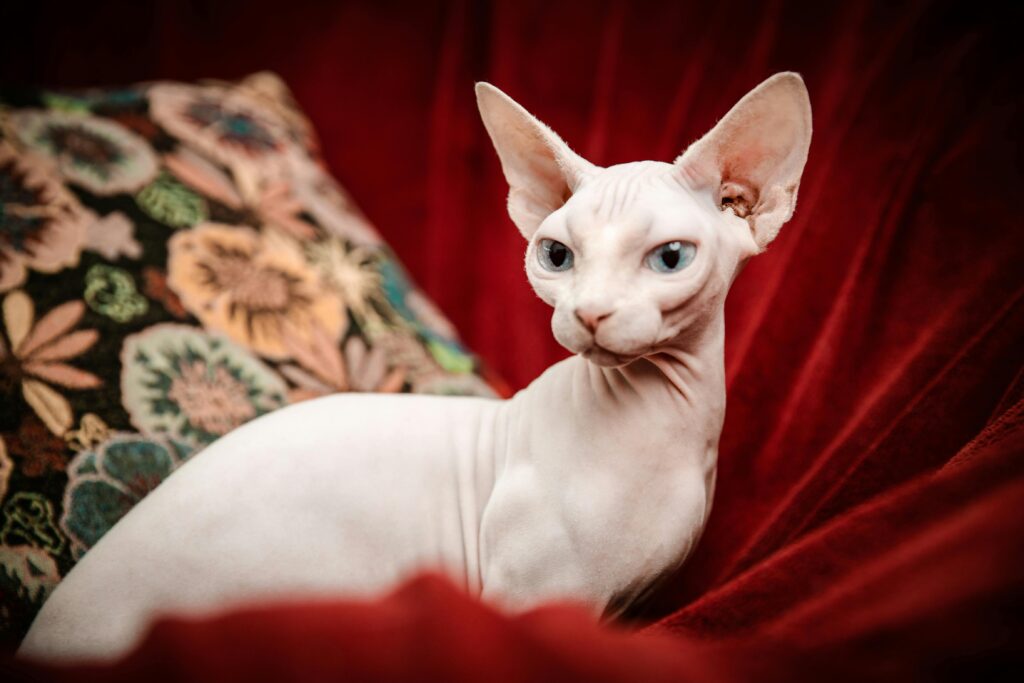The idea of hypoallergenic cats has been widely promoted as a solution for cat lovers who suffer from allergies. However, despite the claims of reduced allergenic potential, no cat is entirely allergy-free. This is because the main allergen responsible for triggering cat allergies is a protein called Fel d 1, which all cats produce to some extent, regardless of breed.
What Causes Cat Allergies?
Cat allergies stem from a protein called Fel d 1, found in a cat’s skin cells (dander), saliva, and urine. When cats groom themselves, this protein is transferred onto their fur, which later becomes airborne as the cat sheds its fur or dander. For people with cat allergies, the immune system mistakenly treats this protein as a harmful invader, triggering reactions such as sneezing, itchy eyes, coughing, and skin irritation.
Hypoallergenic Cats Allergy-Free?
Many people mistakenly believe that hypoallergenic cats do not produce any allergens. However, this is a misconception. Hypoallergenic cats simply tend to produce fewer allergens, or they may shed less, which can lead to a reduction in the spread of allergens throughout the home.
Hypoallergenic Cats and Fel d 1 Production
No breed is entirely free from producing Fel d 1. However, some hypoallergenic breeds, such as Siberian and Balinese cats, are reported to produce less of this allergen compared to other breeds. Studies suggest that hypoallergenic cats like these may have lower levels of Fel d 1, but it’s important to note that the amount of allergen each individual cat produces can vary significantly within the same breed .
Popular Hypoallergenic Cat Breeds

Several cat breeds are commonly referred to as hypoallergenic due to their reduced allergenic potential:
- Siberian Cats: Despite their thick fur, Siberians are often recommended for allergy sufferers due to reports of lower Fel d 1 production.
- Balinese Cats: These long-haired Siamese cats produce less Fel d 1, and their single coat sheds less than other breeds.
- Devon Rex and Cornish Rex: Known for their short, curly fur, these cats tend to shed less, thus spreading fewer allergens.
- Sphynx Cats: Hairless Sphynx cats may seem like a perfect solution since they don’t shed fur, but they still produce Fel d 1 through their skin oils and saliva.
While these breeds may produce fewer allergens, there is no breed that is entirely free from the potential to cause allergic reactions. Therefore, spending time with a hypoallergenic breed before committing to adopting one is a prudent step to take .
Factors Influencing of Fel d 1 Production
The Fel d 1 protein is the most significant allergen in cats, responsible for up to 90% of allergic reactions in humans. The level of Fel d 1 a cat produces can be influenced by several factors, including:
- Gender: Male cats typically produce more Fel d 1 than females, and neutered males tend to produce less.
- Age: Younger cats often produce less Fel d 1 than older cats.
- Grooming Habits: Cats that groom themselves more frequently will spread more allergens onto their fur.
Managing Cat Allergies with Hypoallergenic Breeds
Although hypoallergenic cats can reduce exposure to allergens, it’s crucial to combine this with other strategies to manage symptoms. Allergy sufferers should consider:
- Frequent Cleaning
Regularly vacuum carpets, furniture, and curtains with a vacuum cleaner that has a HEPA filter. This can significantly reduce the amount of allergens in the home. Washing cat bedding, blankets, and toys weekly can also reduce allergen buildup. - Use of Air Purifiers
Installing HEPA air purifiers in key areas of your home can help capture airborne allergens, including cat dander . - Regular Cat Grooming
Bathing and brushing your cat can help minimize the amount of allergens released into the air. For hypoallergenic breeds, this grooming routine is especially helpful to reduce dander. - Create Cat-Free Zones
Designate certain rooms, like bedrooms, as cat-free zones to limit your exposure to allergens while you sleep. - Medication
Allergy medications, including antihistamines and nasal sprays, can help manage symptoms. In some cases, allergy shots (immunotherapy) may reduce allergic reactions over time . - Consulting a Veterinarian or Allergist
Consulting with experts can help allergy sufferers choose the right breed and adopt appropriate management techniques. They may also recommend allergy-friendly products like special shampoos or sprays to further reduce allergen levels.
FAQ: Hypoallergenic Cats and Cat Allergies
Hypoallergenic refers to something that is less likely to cause an allergic reaction. In the case of cats, hypoallergenic breeds are those that are believed to produce fewer allergens, specifically the Fel d 1 protein, which triggers most cat allergies. However, no cat is completely allergen-free.
No, there are no completely allergy-free cats. All cats produce the Fel d 1 protein in their saliva, skin, and urine. Hypoallergenic cats simply produce fewer allergens, which can reduce the severity of allergic reactions for some people, but they won’t eliminate allergies altogether.
The most popular hypoallergenic cat breeds include:
– Siberian
– Balinese
– Devon Rex
– Cornish Rex
– Sphynx
These breeds tend to produce lower levels of Fel d 1 or shed less, reducing the spread of allergens.
Some hypoallergenic breeds, such as the Devon Rex and Cornish Rex, have short, curly fur that sheds less than other cats, which may help in reducing the amount of airborne allergens in your home. The Sphynx, a hairless breed, has no fur to shed, though it still produces allergens through its skin and saliva.
Regular cleaning: Vacuuming with a HEPA filter and dusting frequently.
Air purifiers: HEPA air purifiers can trap airborne allergens.
Regular grooming: Bathing and brushing your cat can reduce dander.
Designating cat-free zones: Keep certain areas, such as bedrooms, cat-free to reduce allergen exposure.
Many people with mild to moderate allergies can live with cats, particularly hypoallergenic breeds, by managing their environment and taking steps to reduce allergens. This includes frequent cleaning, grooming the cat, and using allergy medications. However, if you have severe allergies, living with a cat may still trigger symptoms.
It is possible to become less sensitive to cat allergens over time, particularly with the help of allergy shots (immunotherapy). Immunotherapy gradually desensitizes your immune system to the allergen, though this process can take months or years and does not guarantee complete immunity.
Female cats and neutered male cats tend to produce less Fel d 1 than unneutered males. If you’re allergic to cats, adopting a female cat or having your male cat neutered could help reduce allergen levels in your home.
Even though hypoallergenic breeds may produce fewer allergens, all cats produce Fel d 1 to some extent. Individuals with very sensitive allergies may still react to these breeds, as the allergen is not completely eliminated. Additionally, other factors like dust and pollen in the environment can also exacerbate allergic reactions.
Yes, before adopting a cat, you can spend time with the breed you’re considering to see how your body reacts. You can also consult an allergist for a specific cat allergy test (skin or blood test) to assess your sensitivity to cat allergens.
References:


